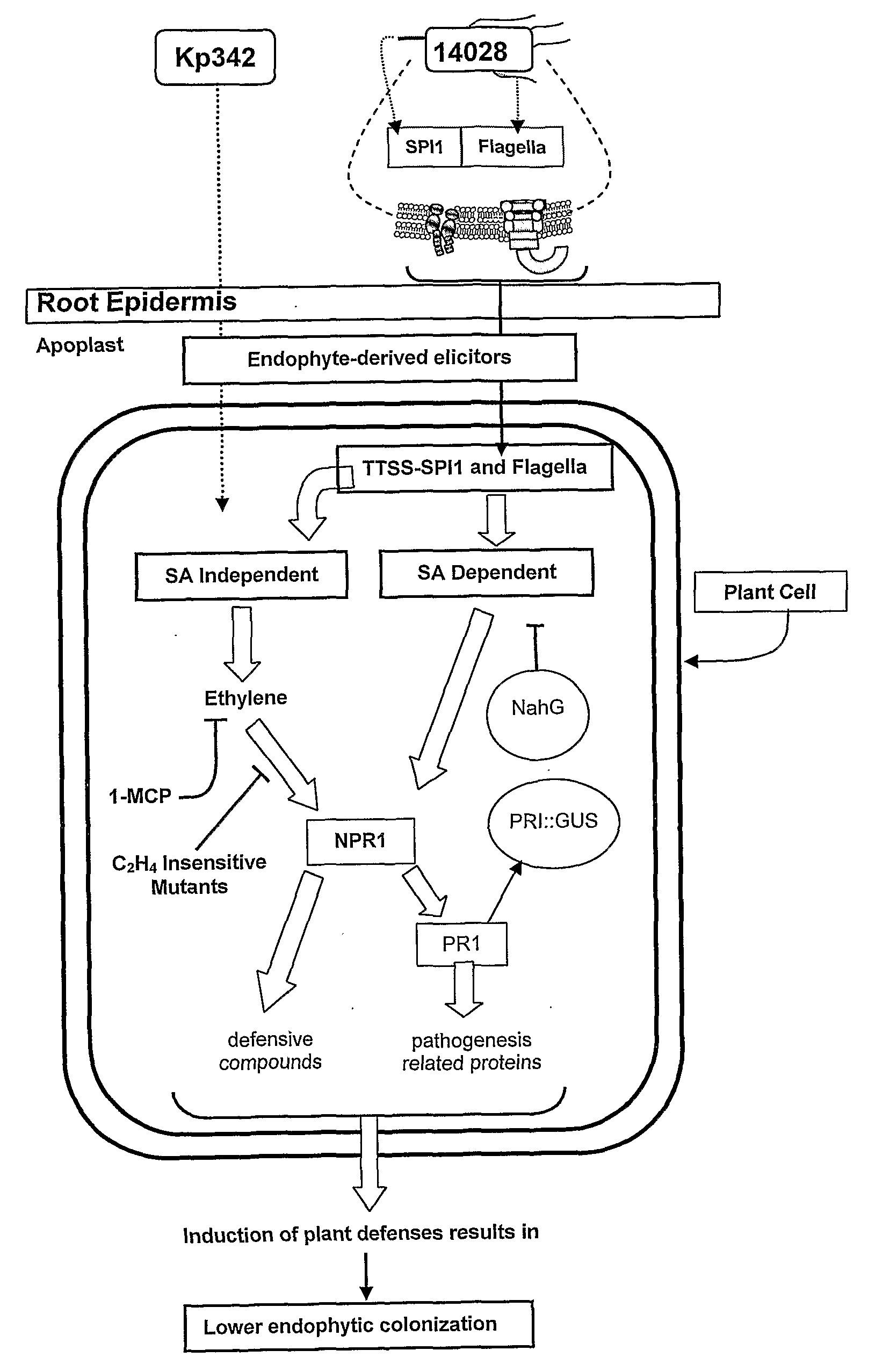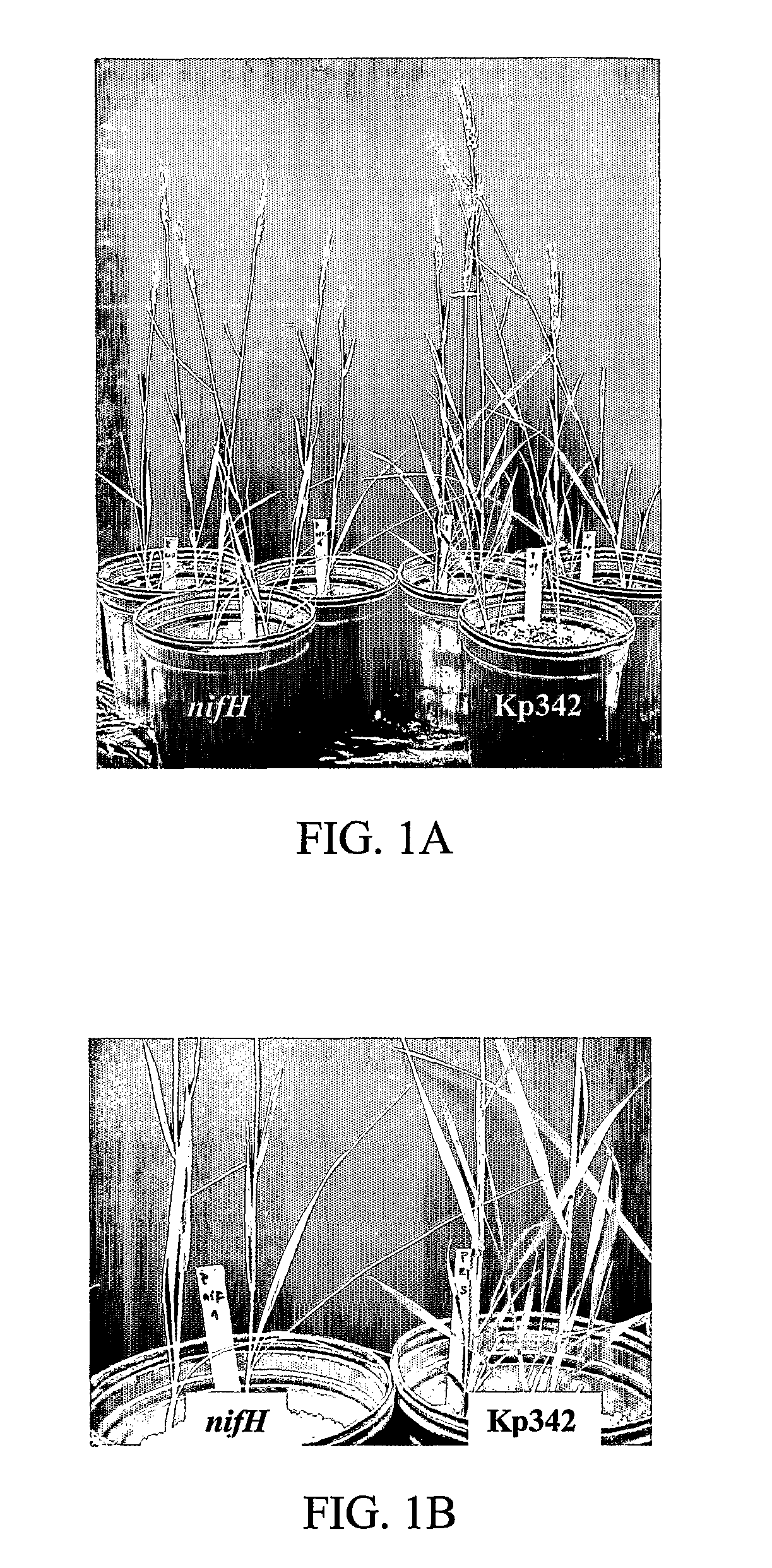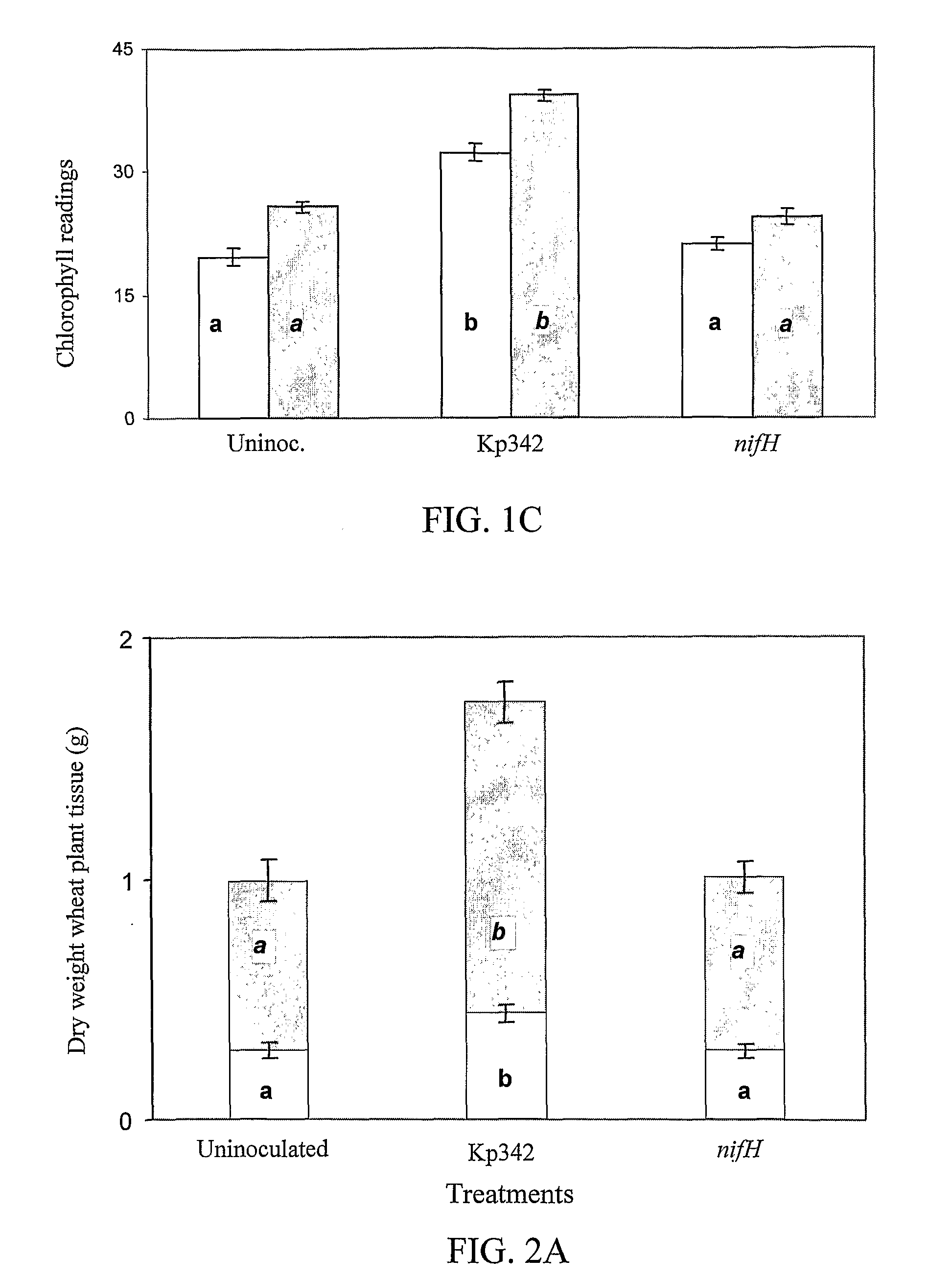Materials and methods for enhancing nitrogen fixation in plants
a technology of nitrogen fixation and material, applied in the field of materials and methods for enhancing nitrogen fixation in plants, can solve the problems of large investment of energy, inability of life forms to use nsub>2 /sub>directly to synthesize the chemicals used in physiological processes, such as growth and reproduction, and the path to use that knowledge to induce nitrogen fixation nodules on non-leguminous crops is not clear, so as to reduce the number of pathogenic bacteria
- Summary
- Abstract
- Description
- Claims
- Application Information
AI Technical Summary
Problems solved by technology
Method used
Image
Examples
example 1
[0062]After six weeks of growth in the greenhouse without nitrogen fertilizer, uninoculated plants and plants inoculated with the nifH mutant were stunted and chlorotic showing severe signs of nitrogen deficiency (FIGS. 1A and 1B). Only wheat plants inoculated with Kp324 appeared taller, more robust, and greener than the controls regardless of the medium in which they were grown (FIGS. 1A and 1B). Two plant culture media (1:1 sand-perlite and 1:1 sand-vermiculite) were used to illustrate the reproducibility of the results. The results of dead cell inoculum treatment for all parameters measured were not statistically different from the nifH or uninoculated treatments (data not shown). Chlorophyll levels in Kp342-inoculated plants were significantly higher than chlorophyll levels found in control plants (FIG. 1C).
example 2
[0063]Kp342 also significantly increased the dry weight of roots and shoots compared to controls regardless of the growth medium (FIGS. 2A and 2B). Roots and shoots of Kp342-inoculated plants were always at least 50% larger in dry weight compared to the untreated controls. Changes in total N per plant with Kp342 inoculation were even more dramatic. In sand-perlite, the percent increase in total N for Kp342 inoculated plants grown was 244 and 498% greater for roots and shoots, respectively, compared to the nifH control (FIG. 2C and D). Compared to the uninoculated control, Kp342 accumulated 285 and 654% more total N in shoots and roots, respectively. In sand-vermiculite Kp342 inoculated plants had 180 and 707% more total N compared to the nifH inoculated plants in the roots and shoots, respectively. In the same growth medium, the total N of Kp342-inoculated plants increased 120 and 378% respectively for roots and shoots compared to uninoculated plants (FIGS. 2C and 2D).
[0064]The conc...
example 3
[0065]To verify that much of the N in these plants was derived from the atmosphere, the plant growth media were evenly labeled with 10 mg of 11.7 atom percent excess 15NH4NO3 per kg of sand-vermiculite and sand-perlite mixes. The 15N concentration of Kp342 inoculated plants was significantly lower than in the controls as a result of nitrogen fixation (FIG. 3). As the primary source of 15N in the plants is from the enriched 15N in the soil, the extent of the dilution of the 15N isotope can be used to calculate the amount of N in the plants derived from the atmosphere. This can be calculated by % NF=(1−A / B)×100, where % NF=the percent of N in the nitrogen-fixing system derived from the atmosphere; A=% 15N in the nitrogen fixing system; and B=% 15N in the non-fixing system (Boddey et al., 1983). When the comparison is made with the nifH control, the Kp342-inoculated plants received 42% and 41% of their nitrogen from N2 for plants grown in sand-perlite and sand-vermiculite, respectively...
PUM
 Login to View More
Login to View More Abstract
Description
Claims
Application Information
 Login to View More
Login to View More - R&D
- Intellectual Property
- Life Sciences
- Materials
- Tech Scout
- Unparalleled Data Quality
- Higher Quality Content
- 60% Fewer Hallucinations
Browse by: Latest US Patents, China's latest patents, Technical Efficacy Thesaurus, Application Domain, Technology Topic, Popular Technical Reports.
© 2025 PatSnap. All rights reserved.Legal|Privacy policy|Modern Slavery Act Transparency Statement|Sitemap|About US| Contact US: help@patsnap.com



